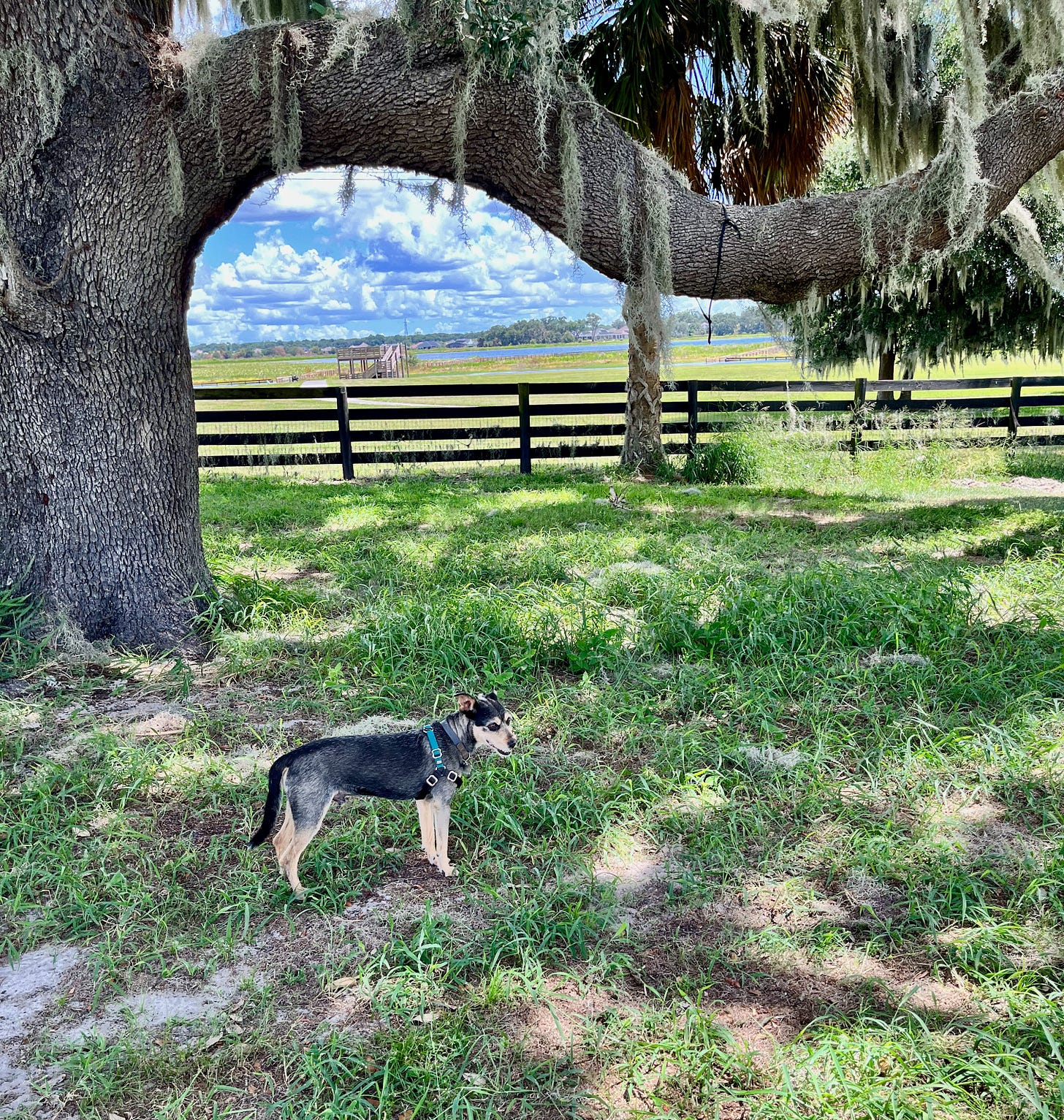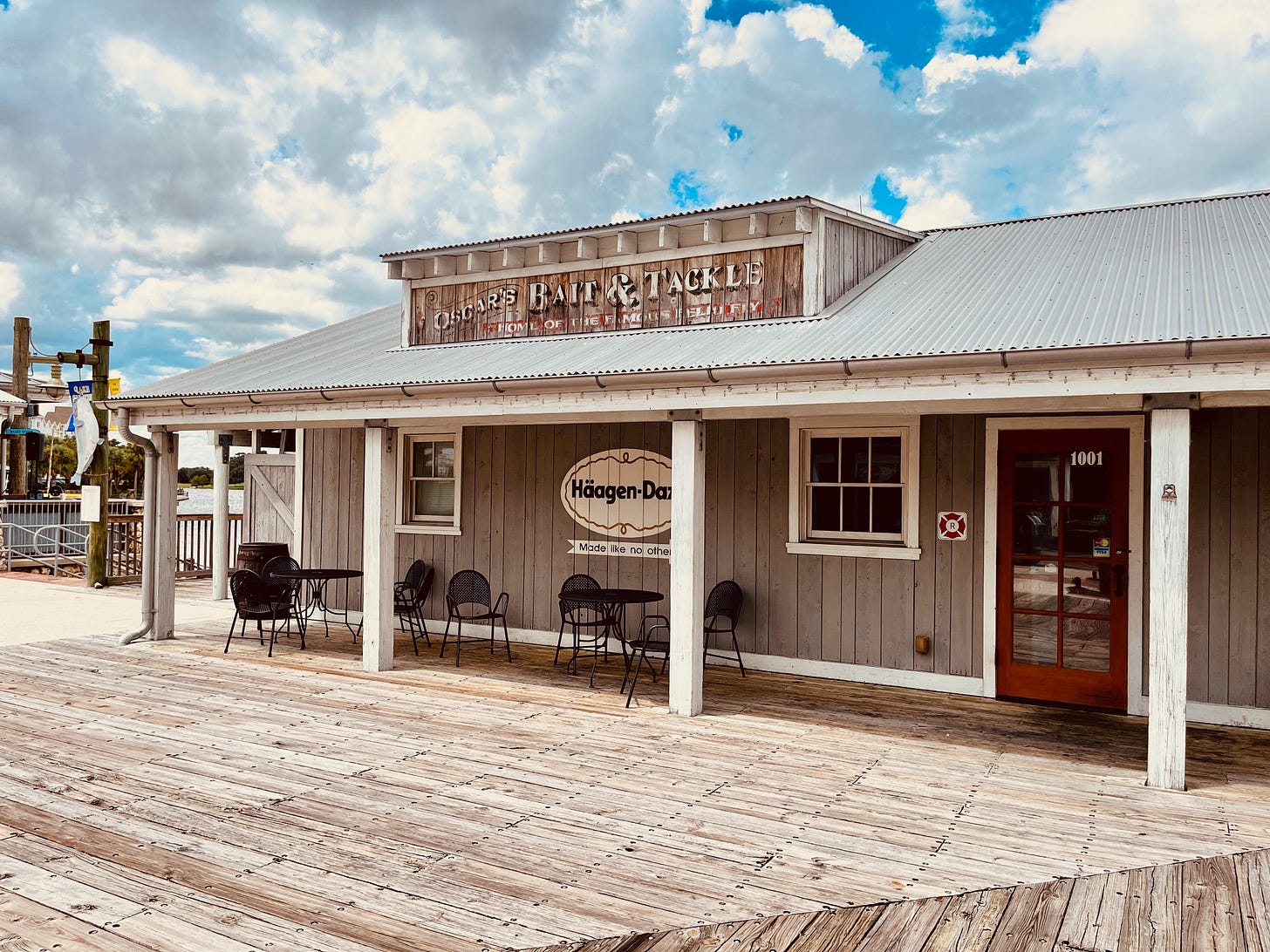Hyper Reality
Where the real and the fake collide
August 31st, 2024
Dear Mel,
Remember when we had to read about post-structuralism in grad school and we stumbled upon Eco’s essay collection, Travels in Hyper Reality? The title essay was written in 1975 but its truthiness remains apparent today. In fact, I’d say The Villages fits right into Eco’s thesis.
Before I explain what I’m talking about, here’s an obligatory dog picture:
Eco’s essay is part travel log and part cultural criticism inspired by his trip across America. Observing American culture, its tourist attractions, art houses, museums and galleries, restaurants, TV shows, advertising, and the people’s fondness for these things, he describes what he believes is the fundamental difference between American attitudes towards culture and those of Europeans.
He names America itself a place of hyper reality whereas Europe is simply normal reality, I guess. Makes sense given his Italian point of view, and life spent in the ancient universities of Turin, Milan and Bologna.
According to Eco, America is obsessed with replicating the real such that “the completely real becomes identified with the completely fake.”
When he refers to the real becoming fake, he is speaking of the replicas that populate our cultural landscape including for example, The J. Paul Getty Museum in Malibu, where Getty recreated a Roman villa as it would have stood in Pompeii with painstaking accuracy, using every piece of archeological evidence available, importing materials and expertise from Italy. Even the gardens are populated only with plants that would have existed in the vicinity of Naples before Vesuvius erupted and wiped out Pompeii.
Getty wanted to bring European classical beauty to America, and he succeeded. I’ve been to the The Getty Villa in Malibu, one of my favorite places in the word, beautiful and peaceful with views across the Pacific Coastal Highway to the ocean beyond, and also completely fake. Except the gardens, which are real, but not native to California, an illusion of Italian formality, they are intoxicating with herbs, fig, quince and pomegranate trees.
You know how I get when I find myself in a well tended kitchen garden. It’s as though I’m transported to something realer than real, a hyper reality of my own expressed through a sense of wonder and peace. The fakery in this case is irrelevant. It is no less wonderful because of it.
Italians don’t need a place like The Getty Villa. The ruins of antiquity are at their doorsteps for all to see. But America is young with plenty of spaces available for its recreations of other places.
Consider the Las Vegas strip and a few of its famous hotels — The Bellagio, Paris, Caesar’s Palace, The Luxor, The Venetian, New York New York — they are all replicas of other places. Then there is Disneyland and Disney World, where whole cultures are recreated from Main Street USA to the Savannah at Disney’s Animal Kingdom, and onward to Epcot where you can experience the world today and the future, including space travel.
The Villages, Florida is one of those hyper real spaces. Together with about eighty thousand other people, I live day to day in a manufactured place with its own invented history.
At least J. Paul Getty didn’t make up the history of Pompeii. The Morse family, who founded The Villages as it’s known today, did exactly that in central Florida. And they did it to sell houses. They bought and developed ranch land, farm land and swamp land, turning a massive profit for their private company, an enterprise that continues today and shows no signs of slowing down. That this development and selling of swamp land makes people happy is all part of the sales pitch. Just like Disney.
The founding family hired a Canadian company called Forrec, which “creates compelling guest experiences rooted in imagination and immersive storytelling for location-based entertainment including theme parks, visitor attractions, water parks, mixed-use entertainment, landscape architecture, urban design, and resorts.”
The Villages developers recognized that in order to turn this place into something other than a manufactured home park with one golf course into a major retirement community they had to invent the kind place that would attract people from other places. One of the things that attracts people is a place identity, and a place with an identity needs a history that evokes positive feelings, a sense of nostalgia. Forrec created that sense of place and at the same time obliterated the actual history of this part of central Florida because, let’s face it, stories of mass murder of indigenous people, slavery, Jim Crow and lynchings doesn’t sell.
Forrec designed the architectural look of the three town centers, Spanish Springs, Lake Sumter Landing, and Brownwood Paddock Square to mimic Spanish colonial architecture, a seaside fishing village, and a country and western ranching town. Part of the fun includes plaques describing fictional historical personalities, their businesses and events that occurred there.
For example, the Haagen-Dazs store at Lake Sumter Landing is located in a building named “Oscar’s Bait & Tackle,” built in the vernacular of a fishing supply store located by the sea. Posted next to the store is plaque telling the story of “The Legend of Bocephus: History or Fish Story?” The story is dated from 1879 when two boys caught a monster fish in Lake Sumter. Here’s the thing: Lake Sumter didn’t exist in 1879. It’s a manmade lake created in the 1990s.
No one is fooled by these signs. Everyone is in on the joke of The Villages “bubble.” But being wise to the fakery doesn’t make one any wiser to the hidden history of this place.
Amanda Brian’s article, “The Faux History of The Villages, Florida,” informed me about the existence of an African American cemetery within the Village of Caroline, one of the neighborhoods near Lake Sumter Landing. The Cherry Lake Cemetery is still used by the Spark Level Missionary Baptist Church whose congregants can access the graveyard from County Road 100B.
The cemetery is located behind the Caroline village pool, shaded by ancient live oaks and is visible from Brunson Way, a residential street. Shielded by strategic landscaping, it isn’t visible from Stillwater Trail, the Villages thoroughfare that passes in front of the cemetery. Frankly, I think this camouflaging landscape is respectful to the people who own the cemetery. They don’t need tourists gawking at their private sacred places. However, it also serves the theme park-like fantasy to hide it from the mostly white northern migrants who buy homes in The Villages.
Surrounding the Villages are the towns of Lady Lake, Fruitland Park and Wildwood, all of which benefit from the economic activity and tax base provided by The Villages. Poor country towns where the legacy of segregation and poverty are evident, the people of The Villages donate funds and time to help lift them up.
A cadre of women from my village have built out an active committee serving Fruitland Park Elementary School, whose students come from a variety of ethnic and racial backgrounds and are mostly poor. These women buy school supplies, provide birthday presents, fund a Santa shop in which kids can trade tokens received for personal achievement throughout the fall for gifts they can present to family members at Christmas time. The women also provide Halloween candy and Valentines, as well as treats for teachers.
Today’s newspaper features a story about Villages alumni clubs raising over $70,000 for local food pantries. Residents do these things because they want to be good neighbors. There may not be a deep understanding of the local history, but there is a commitment to the communities surrounding the bubble.
Hyper reality is all about consumerism, profit, and sales, and it’s also about providing meaningful experiences. The Villages Corporation exists to sell houses. That is its purpose. Everything is designed by the developers with that goal in mind. It is perhaps the most solidly capitalistic place in America, helped by Florida’s friendly laws that allow governance of this place to be run in a way that skirts the inconvenience of mayoral elections, city halls, and even police stations. Neighboring counties and towns provide law and order with funding from villagers’ property taxes.
Yet, the people who populate this place receive a great deal in return for their participation in this hyper real, capitalist eco-system. It’s the only place I’ve ever been that serves retirees in such a positive way. The services, opportunities for fitness and social participation, volunteerism and neighborliness have created the kind of connections that support living well. The social isolation experienced by seniors elsewhere is avoided, supporting long, healthy lives.
The positivity created by the fakery and embodied by the people makes The Villages into the vibrant place it continues to be, attracting more and more adults in the third 1/3 of life embracing the beauty of leisure and community after their lives as employees, workers, parents and professionals has ended. They remain relevant and valued here.
Given its very American nature, I can understand why The Villages couldn’t exist anywhere else. Hyper reality needs dreamers, strivers, and space along with an invented history whose winking falseness attracts and unites rather than shames and divides. Paradoxical, I know.
Villagers are in this together, along with their contradictions, warts, blind sides and any other imperfections you can think of.
Your friend,
Martina
PS - Here are some pictures I took yesterday to give you a sense of what I’m talking about.
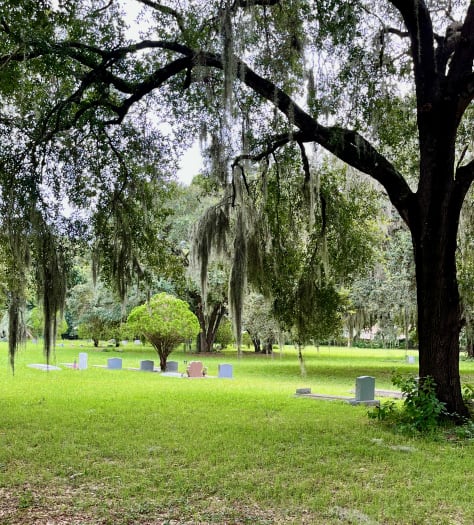

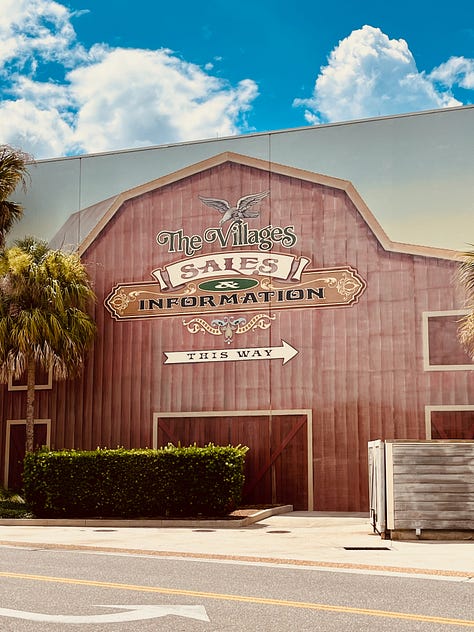
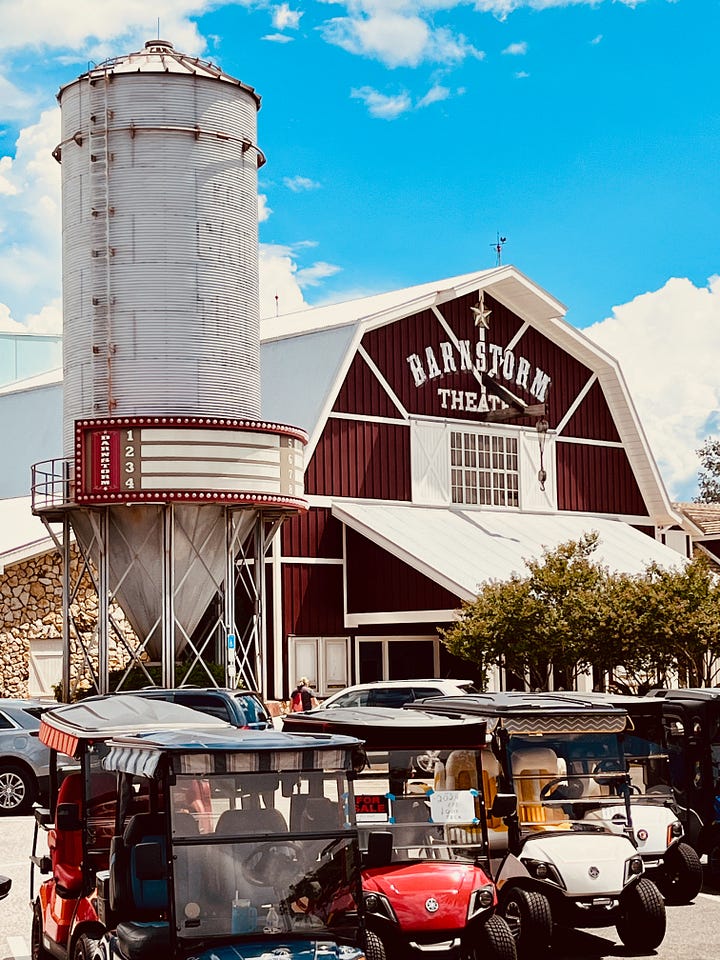
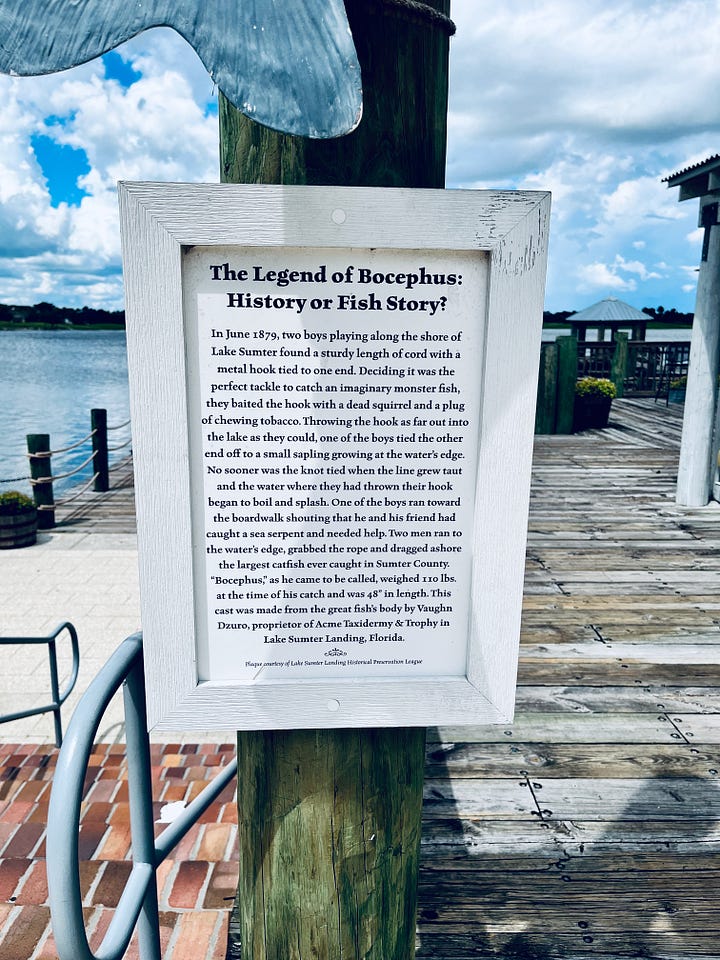
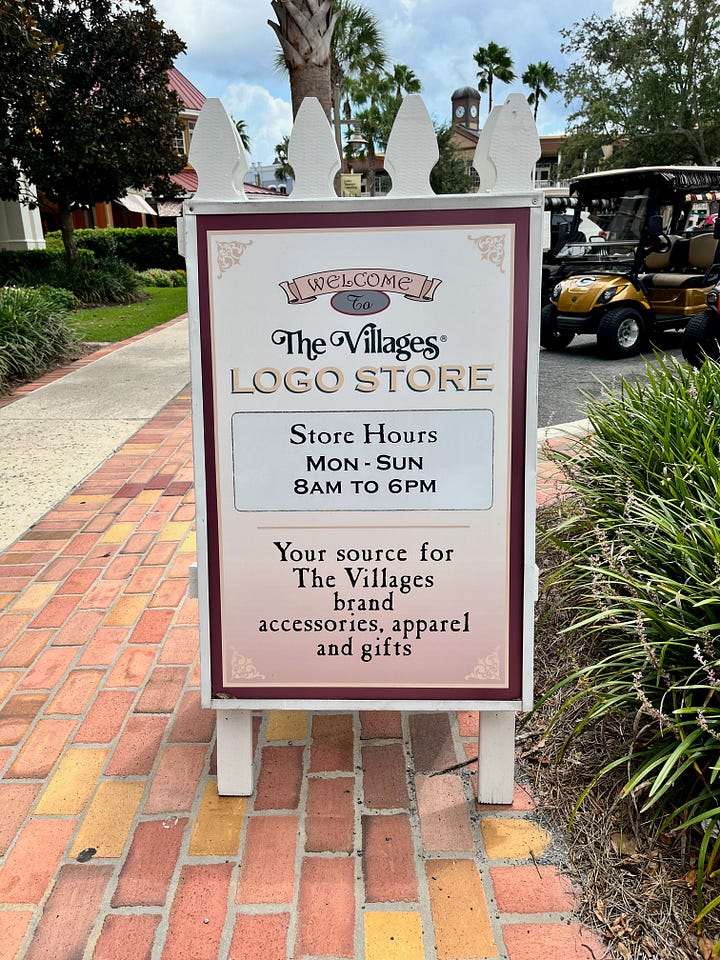
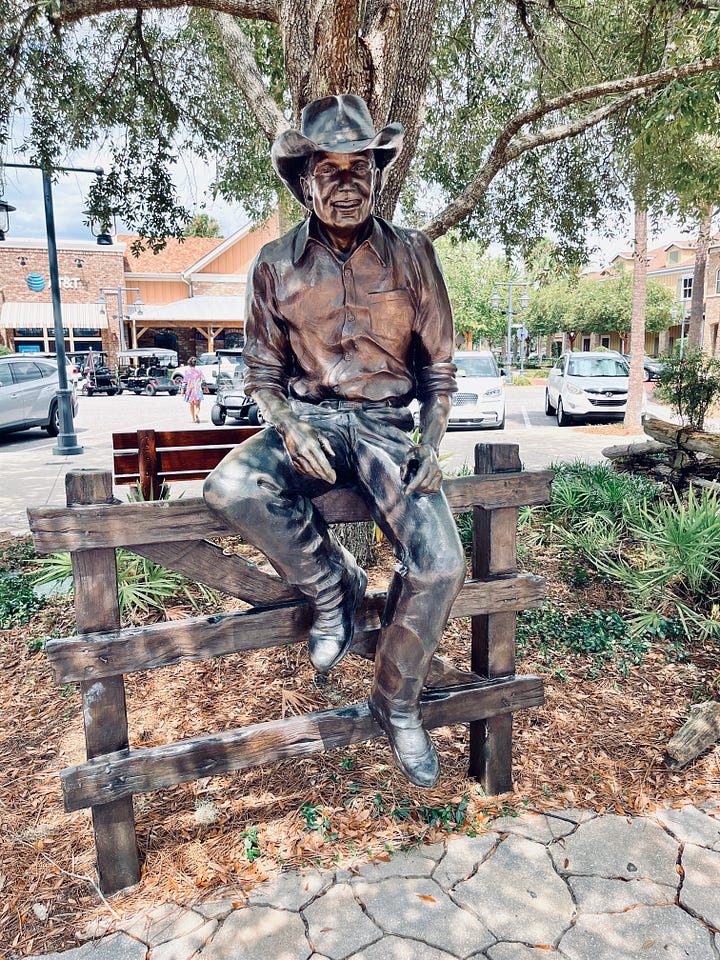
Sources and Links:
The full text of Eco’s “Travels in Hyper Reality”:
http://www.columbia.edu/itc/architecture/ockman/pdfs/session_8/eco.pdf
The Getty Villa in Malibu:
https://www.getty.edu/visit/villa
Forrec Corporate Web Site:
https://forrec.com/projects/the-villages/
Journal article referenced above:
Brian, Amanda M. “The Faux History of the Villages, Florida.” Southern Cultures 20, no. 4 (January 1, 2014): 58–71. https://doi.org/10.1353/scu.2014.0037.
A link to an Ira Glass audio story about his own investigation of American hyper reality:
https://www.thisamericanlife.org/38/simulated-worlds/act-one-9
Just for fun, a link to the Wiki page defining Florida Cracker:



